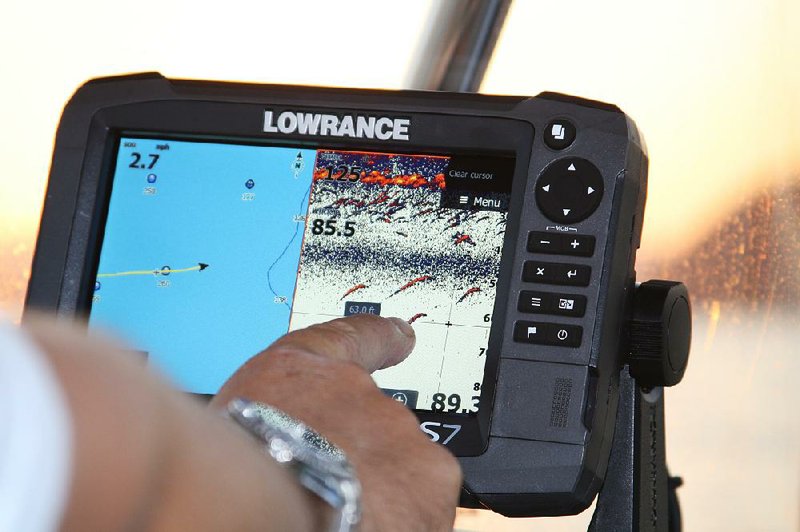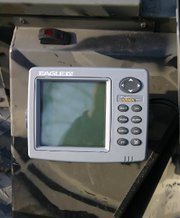Hunting and fishing have changed a lot over the years, but the biggest change is technology.
Technology, especially electronics, helps us catch more fish and kill more game, but that's only part of the trend. The bigger trend might be the extent to which we enjoy the technology itself.
For example, deer season for most hunters used to last a few weeks. In short, gun season.
Game cameras have turned us into 12-month deer hunters. We've got cameras all over the woods to help us determine seasonal whitetail travel and feeding patterns, and to tell us how many deer and what kind of deer are in our woods.
Hunters used to hope to see big bucks. Cameras enable us to watch individual bucks through their entire life cycles. Cameras monitor their antler growth, and they help us determine when and where we are most likely to see them when we are ready to hunt them in earnest.
I love running my cameras, and it's almost like Christmas every time I plug a game cam's SD card into my computer.
As much as hunters love their cameras, I know of no other group that enjoys playing with its gadgets more than anglers.
Do you like old submarine war movies? U.S. Navy destroyers in those films always had a sonar operator, a geeky seaman with coke-bottle glasses and a pocket protector whose nickname was always "Sparks." Listening intently through his headset, "Sparks" always knew when his sonar "pinged" a U-boat. The captain was as deferential to lowly "Sparks" as he would be to an admiral, and "Sparks' " keen ears always ensured that the skipper caught that "fish."
Modern sonars have created an entire population of "Sparks" monitoring their screens for their favorite game fish. Sometimes it seems that the actual fishing is secondary to the video game, but it's easy to see why.
Modern graphs that have side scan and down scan imaging allow anglers to identify almost every item in the water. Some models now feature 360-degree imaging so you can see everything around your boat.
A good graph will tell you if the bottom is soft or hard, and how thick is a silt layer.
In the 1990s, the world's best graphs were very small, and most were black and white. A sonar return showed up on your screen as a fish icon in one of three sizes.
In the mid 1990s, Lowrance introduced improved units with enhanced imagery and showed fish as arches. An advertisement for their units that ran in outdoors magazines showed Gary Klein, a Bassmaster legend, grimacing at one of those old school fish icons on the end of his line with a tag that said, "Because REAL fish don't look like this!"
In the early 2000s, the late Penny Berryman persuaded me to buy one of the latest Lowrance units. I actually bought an Eagle FishMark 320, which was a budget priced Lowrance sub-brand, but it was fantastic. It is so sensitive that I can drop a spoon in the water and watch it on the graph. You can also watch a fish swim up to it and actually take it.
That was really impressive back then, but today's graphs do all that and much more.
I still use the Eagle on my aluminum boat, but they are primitive compared to the Lowrance HDI units I use with my kayaks. And the HDI units are increasingly obsolescent compared to newer stuff that comes out every year from Lowrance, Humminbird, Garmin and Raymarine.
If you learn how to interpret the data your graph displays, they will certainly help you catch more fish.
Ryan Sealock, formerly of Springdale and former editor of FLW Outdoors magazine, is editor of Wired2Fish.com. He is an accomplished bass angler who is on the cutting edge of all bass fishing trends.
One of the most useful applications for a side scan and down scan graph, Sealock said, is distinguishing largemouth bass from other fish offshore in the summer.
"Bass are locked to the bottom in a real tight group," Sealock said. "When the signatures are all on top of each other, signatures of 7-, 8-, 9-, 10-pound fish, do you believe there's that many 10-pound bass on a spot?"
No.
When bass are on the bottom and catchable, they are close together and look like pebbles on the bottom of the screen, Sealock said.
"They're lined up on the bottom, and there'll be, like, 20, real close in a line on the bottom instead of stacked up on one another and spread out through the water column."
On structure that holds hundreds of bass, they will stack a little, Sealock said, but they will still primarily appear on a graph as a narrow band on the bottom.
"They'll be thick," Sealock said. "The reason they stack up is there's so many that they can't all be together on the bottom."
When you see a ladder type formation in the water, that's probably white bass or crappie," Sealock said.
Saltwater anglers also look for big signatures on their graphs. They might not stop and fish them immediately, but in the Gulf of Mexico, which is notoriously short on structure, sonar pings a school of fish because they're on structure. An angler can return anytime and find fish there.
I've caught the techno-geek fishing bug as bad as anybody. When I'm in my kayak, I spend half my time paddling around checking out stuff on my graph. It's kind of like reading a schematic manual for the water I'm fishing.
Time on the screen usually results in fish on the line.
Sports on 06/19/2016


